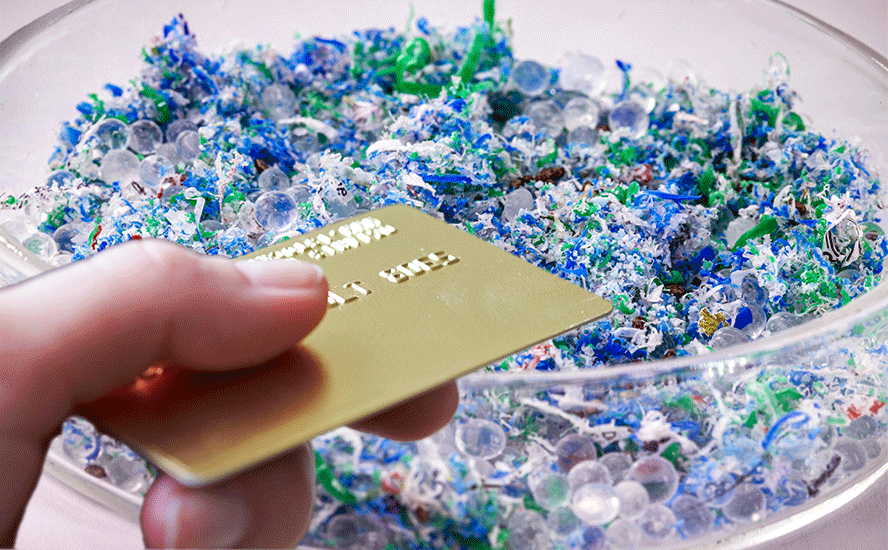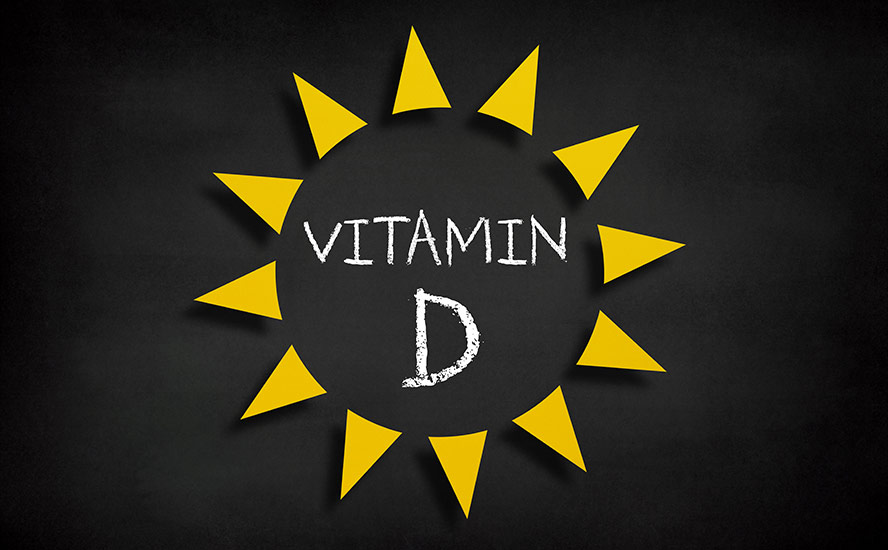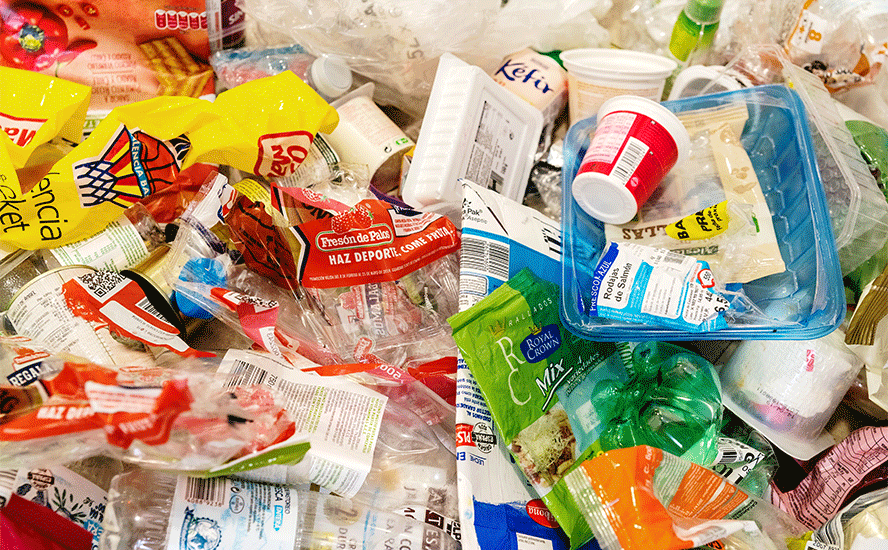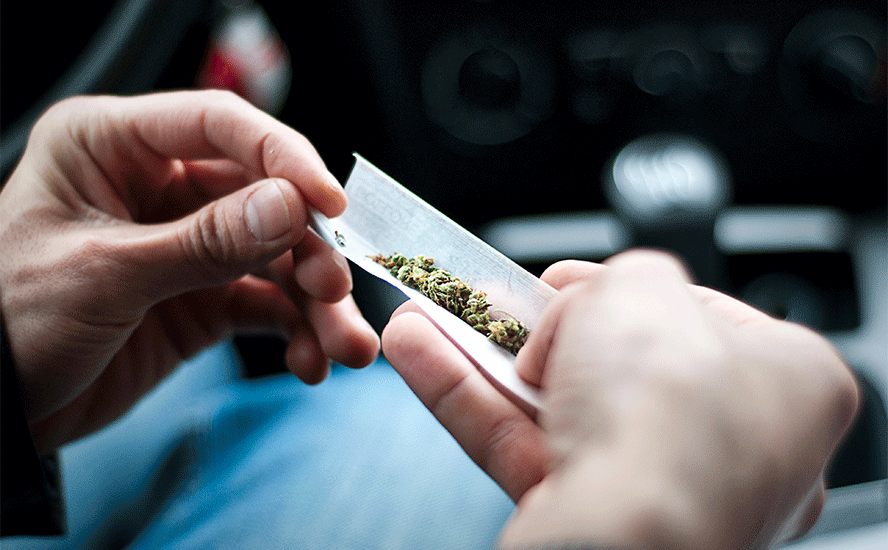The future of pot

2019.05.07
The passage of Bill C-45 on October 17, 2018 made Canada the first Group of Seven nation to legalize pot, and only the second country to legalize the sale and consumption of marijuana after Uruguay. Around 20 countries already permit medicinal marijuana to be bought and sold. In the US, 32 states currently allow the sale of cannabis for medical purposes. Eleven have legalized recreational weed.
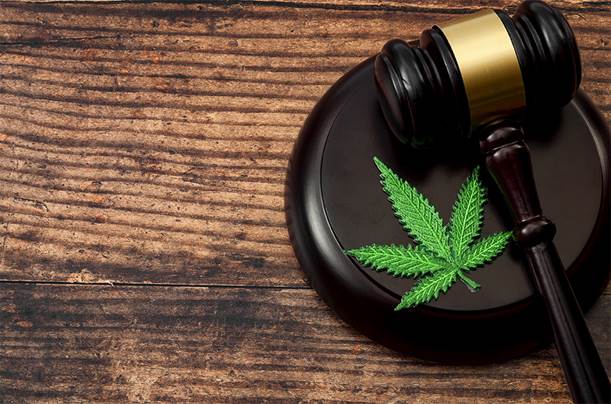
For many Canadians, pot legalization is a big deal and has been a long time coming. No more tiptoeing around it, even though for years the demon weed has been swept under the rug by the RCMP and border agents, as far as laying charges.
But for merchants of cannabis and related products, the roll-out, pun intended, of the Cannabis Act must be seen as a bit of a disappointment. Six months into legalization, despite all the excitement around the marijuana market, there remains a dearth of supply. Prices have failed to beat the illegal market, which is still very much alive; killing it was the whole intent of legalization. A story last month by CTV reported pot prices rose 19% since the plant was legalized. Your friendly neighborhood pot dealer is still in business.
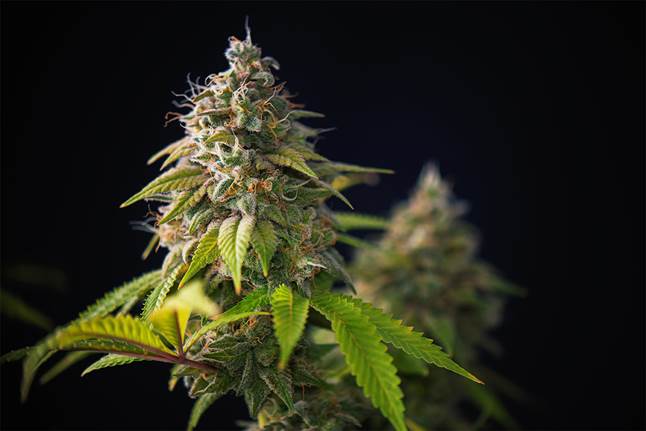
Nevertheless, one shouldn’t underestimate the heft of legal weed.
Deloitte put some numbers to the Canadian pot market, and they’re impressive. The consultancy figures the market has a retail value of between $4.9 billion and $8.7 billion, which is more than the $5 billion market for spirits. The Deloitte numbers were based on a study of 5,000 Canadians.
Pot is not only smoked, but can be consumed as edibles, or in drinks. The edibles phase of Bill C-45 takes effect this October.
Cannabidiol (CBD) is produced from hemp, a strain of the Cannabis sativa plant. CBD won’t get you high and is used as a relaxant, a sleep aid and a treatment for epilepsy. There is even CBD oil for anxious pets.
At Ahead of the Herd, we got to thinking, where is the pot industry going? What are the trends? How can we as investors position ourselves, now that the first wave of marijuana IPOs ie. licensed producers (LPs) has come and gone?
In this article we peer into our crystal bong, to come up with some answers.
Toking is going up in smoke
Until fairly recently the only way to get high from marijuana was to roll it up in a joint and smoke it. Whether packing it into a pipe or huffing on a bong, the method is the same: light your dried marijuana bud on fire then inhale the smoke deep into your lungs and wait a few minutes for the THC to take effect.
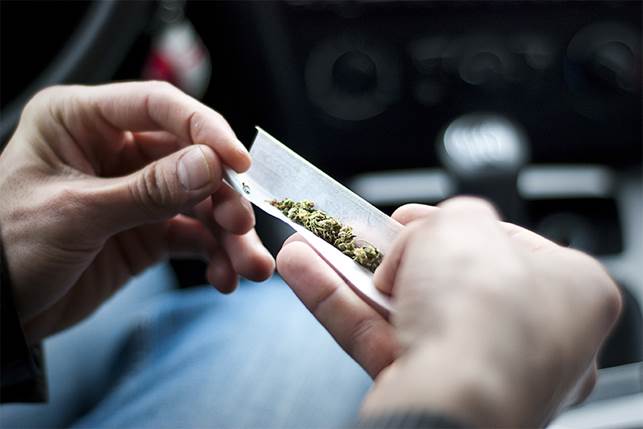
While this is the most common way to get high, it is not a very efficient means of delivering the drug to your system. Burning it produces all kinds of harmful carcinogens that you’re breathing in with the marijuana. Some of the sought-after THC, the ingredient that makes you high, literally goes up in smoke. And the dose is impossible to control. Everybody inhales differently; the depth of inhalation (toke versus supertoke) can make a huge difference in how much THC goes into your lungs.
While pot advocates say marijuana smoking is safer than cigarettes, the evidence shows otherwise. Inhaling weed smoke may not put you at as high a risk of cancer as cigarette smoking, but it comes with other effects. According to the National Academies of Sciences, Engineering and Medicine, long-term cannabis smoking is linked to worse coughs and more frequent bouts of bronchitis.
A lot of younger pot smokers prefer to get their high using e-cigarettes, which are considered by many to be safer than traditional smokes, but evidence is emerging that “vape pens” are just as addictive, if not more addictive, than cigarettes, and contain more chemicals to boot.
One recent article points to a new type of e-cigarette called “juul”. The e-cig maker claims to be a safer smoking alternative, but in trying to eliminate cigarettes the company is actually making people more addicted to nicotine because each pod contains around the same amount of nicotine as a pack of cigarettes.
Juul pods also contain benzoic acid, a preservative that has been linked to asthma and hyperactivity in children. A 2018 study found that vapors inhaled by 56 e-cig users had toxic metals in them such as lead, with is known to cause lung cancer and liver disease.
Extracting the pot in an oil, or putting it into a pill, is far preferable, if you’re looking for consistent dosing, no toxic vapors, nor the skunk-weed smell that sticks to your clothes and makes it obvious to others that you just “burned one down”.
“I see the future of the cannabis sector much more around the new products that are going to come,” Marc Lustig, CEO of Ottawa-based marijuana investment company CannaRoyalty, told CBC News. “Smoking has gone the way of the dodo bird.”
This is logical, especially for older cannabis consumers who are using a strain of the drug for medicinal purposes, or want to try the wildly popular cannabidiol (CBD). But there is also evidence to back this trend up.
A 2018 survey of the cannabis industry by Deloitte found that, while 64% of consumers partake through rolled joints, almost as many, 58%, plan to purchase edible cannabis products when they become legal this October.
Edibles
In my mis-spent youth, I recall trying baked goods laced with marijuana. The “body stone” that came from pot brownies was quite a different sensation from smoking a joint – and something companies are trying to replicate, albeit on a safer, more regulated scale, through cannabis edibles.
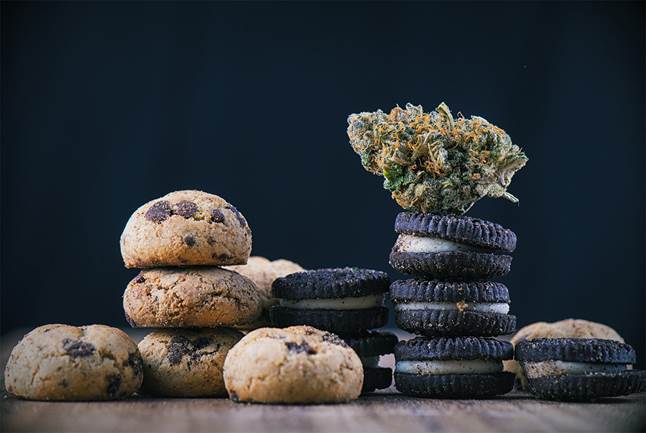
In Canada, edibles are still currently illegal, but that will change in October when the second phase of the Cannabis Act becomes law. Edibles are legal in US states that have adopted legalization regimes.
The market for food and drink-infused cannabis is huge. Green Entrepreneur mentions a study by Arcview Market Research and BDS Analytics, that expects the edibles market to quadruple from a billion dollars spent by consumers in the US and Canada in 2017, to $4.1 billion by 2022.
We already have stats from California, the first state to legalize medical cannabis, in 1996 (full legalization in 2016). The same Arcview study says that cannabis consumers there spent $180 billion on THC-infused food and beverages in 2017. Edibles in the other 10 states where pot is legal, are also doing well.
Meanwhile in Canada, companies are positioning themselves for the edibles roll-out this fall. A study from Deloitte estimates that while smokable marijuana will generate up to $5 billion in 2019, the edibles market is pegged at between $12 billion and $22 billion.
The Deloitte study says six out of 10 Canadian cannabis customers are likely to choose edibles when they become legal later this year; brownies, cookies and chocolate were the most anticipated products to try.
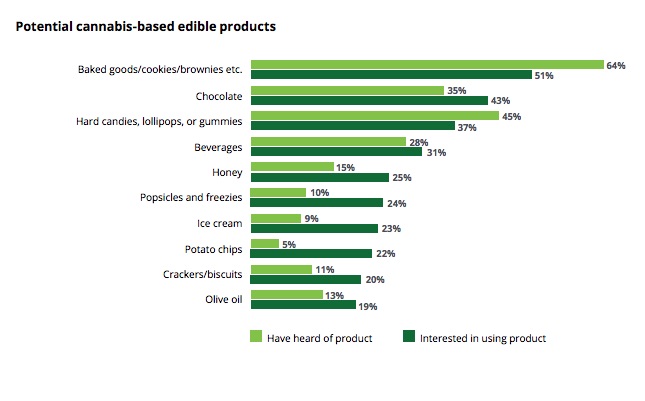
Then there are the beverages. The head of Molson Coors believes the beverage market will account for up to 30% of edibles.
Cannabis-infused beer is expected to be one of the most popular drinks. Why else would Constellation Brands, the third largest brewing company in the world and maker of Corona, spend $4 billion to own 37% of Canopy Growth? The two firms are planning on developing a menu of cannabis beverage products.
Around the same time, August 2018, Molson Coors Canada said it will join HEXCO, a Canadian licensed producer (LP), to develop non-alcoholic, cannabis-infused beverages for the Canadian market.
The Constellation-Canopy Growth joint venture was followed by a deal between Anheuser-Busch, the world’s largest brewer, and Tilray, another major Canadian LP. Each will spend up to $50 million to research drinks laced with CBD and their viability in Canada, states Born2Invest.
Another just-announced JV is between Sproutly Canada and Moosehead Breweries, whereby the two companies will develop CBD-infused iced teas, ciders, beers and sparkling waters. Moosehead is the largest Canadian-owned brewery.
CBD
It’s hard to write about marijuana these days without mentioning cannabidiol. CBD is a non-psychoactive chemical found in marijuana and hemp plants. The substance is in marijuana joints, but in such low quantities that its presence is overwhelmed by THC and the other 100-odd compounds that make up a batch of pot.
This Guardian article calls CBD “2019’s avocado toast” and “this moment’s turmeric shot.”

The pot plant extract is used in coffee, vapes, chocolate, creams, bath bombs, bottled water, as a sleep aid, stress and pain reliever, and even for anxious pets.
Whether you think CBD is an emerging superfood that heals and rejuvenates, or is just the latest health craze with little science behind it, there is no denying that CBD is on a sharp growth curve.
“What we’re finding is more and more consumers are just looking for something to help them relax, to take away the stress, maybe to help them sleep. What most consumers are looking for in this day and age is calm,” Andrew Pollock, vice-president of marketing for The Green Organic Dutchman, told CBC.
The CBD market in Canada, where it’s legal, is expected to reach $1 billion in the next five years. All but three US states allow the legal use of CBD in some form, with or without a doctor’s referral. However, the FDA has yet to approve it.
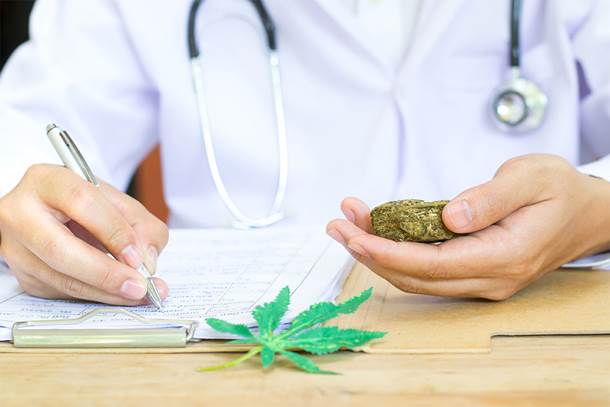
One of the challenges for companies involved in making and distributing CBD products, is the absence of proof that it works. Everything so far is anecdotal. No clinical trials have been conducted to test for the placebo effect. That’s a problem, says Philip McGuire, a professor of psychiatry and cognitive neuroscience at King’s College London, quoted by The Guardian.
“Especially in mental health, the size of the placebo effect is enormous. That’s not to dismiss it, but that’s why in clinical trials, if you don’t give half the people in the trial a placebo, it’s considered junk. It’s not publishable, it’s not taken seriously because, in mental health, the placebo effect can produce a 40% change in symptoms.”
The absence of scientific rigor on the effects of CBC makes it incumbent upon producers to have their products tested, in order to confirm the presence of some amount of CBD (versus a placebo).
If marijuana is legalized in the United States under federal law, as a consumable, CBD would come under the rubric of the Food and Drug Administration (FDA) and other food/beverage regulatory agencies, making testing in the US even more important than it is now.
Synthetics?
Some companies are looking at synthetic CBD ie. CBD made in a laboratory, analogous to synthetic diamonds versus gemstones mined naturally. While the technology does exist, it is far more expensive than extracting the substance from marijuana or hemp plants. But the more vexing problem is that it’s impossible to reproduce the same effect that THC or CBD give via a natural exposure. That’s because lab-made CBD or THC is only extracting the one chemical, whereas in nature, over 100 cannabinoid compounds are lumped together in the plant.
Hemp
CBD’s reputation got a big boost last December when the 2014 US Farm Bill became law, removing hemp from the Controlled Substances Act. That opened the door for hemp-derived CBD, since it is now legal, as well as hemp farming.
The Farm Bill puts hemp on an equal footing as other farmed commodities like corn, wheat or soybeans. That allows farmers to get loans to grow hemp and to insure their crops. In short, it’s a big deal for US farming.
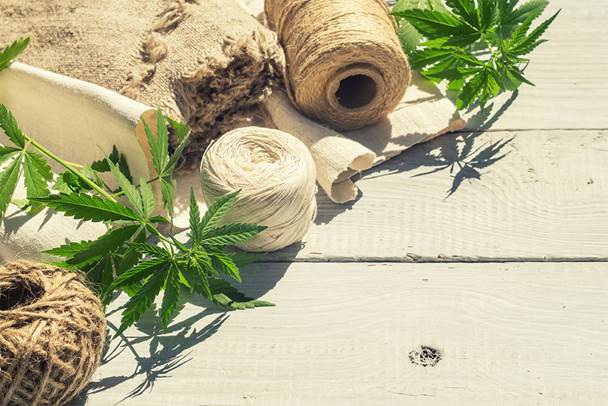
Little-known hemp flies under the radar. It appears in an incredible 25,000 products around the world including furniture, textiles, food, beverages, beauty products and construction supplies. But for nearly 50 years, US farmers couldn’t grow it because it fell under the Controlled Substances Act along with some of the most dangerous drugs including heroin and LSD.
Now they can, and that is showing in the number of new hemp crops. In Colorado where cannabis is legal, there was double the number of hemp crops in January, compared to January 2018, states the Colorado Sun. The state’s department of agriculture expects hemp crop acreage to reach around 50,000 acres by the end of this year, compared to the current 31,670 acres.
For hemp to be legal for industrial use (including CBD extraction), under federal government rules, it must be below 0.3% THC content.
While American farmers can grow hemp, extract CBD and sell it, in Canada CBD extraction from hemp is restricted to licensed marijuana producers, who can only market it in oil form. According to the Financial Post, Canopy Growth is the only LP in Canada with hemp farms. The company has said it would spend $150 million to set up a hemp facility in New York state, to extract CBD.
Brett Halvorson, chief financial officer of True North Cannabis Corp., told the FP there is a disconnect between the current marijuana undersupply, and the potential to produce CBD from hemp.
“The CBD market is booming, and it’s short on extraction infrastructure. And then you see empty shelves in cannabis stores that — all that could be substituted with CBD from hemp.”
In the States, the problem isn’t CBD extraction capacity, but economics. CBD can be made both from a pot plant and a hemp plant. Hemp farming typically involves large-scale outdoor farming, whereas marijuana is grown indoors in greenhouses.
According to Khurram Malik, CEO of Biome Grow, based in Atlantic Canada, if an LP decided to prioritize hemp, it would be too expensive to extract CBD from a marijuana plant indoors; rather, it should be grown outside, at much lower cost.
Halvorson notes that switching from one crop to another isn’t easy for LPs.
“The vast majority of licensed producers have not taken on the challenge of outdoor growing in the hemp space because it’s broad acre agriculture, and requires a totally different skill set from growing in a greenhouse,” he was quoted saying.
As for the situation in the United States, hemp-derived CBD is really just a temporary work-around the restrictions on CBD at the federal level. Federally, CBD is still a Schedule 1 drug under the Controlled Substances Act, as is marijuana; the DEA organizes certain drugs into “schedules” based on their medical value and potential for abuse.
What the Farm Bill did was to legalize CBD based on a set of narrow cultivation activities such as growing CBD for academic research. Under the Farm Act, as long as the CBD product is under 0.3% THC content, it is considered hemp and therefore CBD can be legally extracted and sold.

If, and when, the federal government legalizes marijuana and CBD, all the hemp farmers who have been growing low-THC hemp outdoors, will be free to grow marijuana and hemp indoors, raising plants that have the whole spectrum of THC and CBD content, from very low to very high. (customers in Canada have been asking for cannabis products higher in CBD content). The higher the THC of a marijuana strain, the higher the price it commands. In an IP’s ideal world of full legalization, it would rather produce CBD from pot plants than hemp, because growing marijuana is more profitable.
Workplace testing
One of the greatest concerns about cannabis legalization, from both a public safety and employer point of view, is coming to work high. The way for companies to prevent this has been to conduct a drug test on every new employee; and spot-check employees from time to time, to show compliance.
Urine-based drug testing became commonplace in the 1980s during Ronald Reagan’s “War on Drugs” but it has never been effective. According to Business Insider, experts say drug testing does not often prove intoxication at the workplace, nor does it make a strong connection between pre-employment testing and employee performance.

Testing for marijuana through urine sampling is further complicated by the fact that THC can remain in an employee’s system for weeks, making it difficult to determine when the employee ingested the drug and whether job performance would be impaired.
Without a reliable test for marijuana, companies are putting their staff and the public at risk, especially now that 11 states and all Canadian provinces and territories have legalized cannabis. They are also opening themselves up to a lawsuit by an injured employee; a testing protocol can prevent liability.
A study from Quest Diagnostics, quoted by Business Insider, found the rate of US workers and job applicants testing positive for marijuana and other drugs (opiates, cocaine, heroin) hit a 14-year high last year. Testing was done via urine samples.
Scarily, marijuana use was up 24% since 2014 in safety-sensitive jobs like airline pilots and train operators, BI reported. Transportation, construction and manufacturing saw a 20% increase in positive test results, according to Quest Diagnostics. More Canadians are going to work stoned, too. Around 514,000 people, or an estimated 13% of workers now using cannabis, consumed it before work or while they were working, according to Statistics Canada.
FluroTech TSX.V:TEST
Currently there is no universal method for testing cannabis products. But as regulated cannabis markets continue to emerge in North America (Canada and 11 US states now have legal marijuana, sold for medicinal and recreational purposes), there is a growing need for a system of rapid and effective cannabis testing. The testing market is pegged at $300 million in Canada, just over double that in the United States, and $2.75 billion worldwide.

FluroTech is the first-mover in this space with disruptive spectroscopy analytical testing devices. There are currently no public or private companies with similar technologies for cannabis testing.
The testing device, called CompleTest™, uses spectroscopy and fluorescence to measure the content of a given attribute including CBD, THC, mold, pesticides and heavy metals. The device was recently commercialized.
The Calgary-based company’s revenue model involves selling testing devices to licensed cannabis producers, retailers, and companies that do drug testing. The buyer would purchase a testing device plus a “scope” that slots into the device for each type of test – THC/CBD, pesticides, heavy metals, etc. Each test (“lab kit”) would be priced individually or bundled per month.
Crop quality
Of great interest to the dispensary and consumer is the THC level, or in the case of CBD products, the amount of cannabidiol. Some cannabis consumers are wanting the higher-level THC content found in the “flower” (bud) of the plant, while others prefer something less potent. Same with buyers of CBD products.
But testing has its advantages far before the final test for potency is conducted on the strain about to be distributed to dispensaries.
Unlike getting a sample tested in a lab, CompleTest™ can return a result within minutes, versus days or weeks. This is a big advantage to cannabis growers because it vastly reduces wait times. It also allows growers to test plants at any time during the growing cycle, not only the final stage when the product must be tested to meet government regulations before being sold.

Frequent, regular testing enables growers to identify pests or contaminants (heavy metals, insecticides, herbicides, mold), early on, and to optimize their crops, making them more profitable. It also gives consumers more confidence that the company they are buying from, delivers a quality, contaminant-free product that also offers consistent dosing (potency). The worst kind of publicity for an LP is the discovery of a tainted crop that has to be pulled from shelves.
Biomarking
FluroTech is also envisioning CompleTest™ being used for “biomarking” whereby an attribute is placed into every plant grown by a licensed producer, that can be tracked throughout the plant’s life. Biomarking would allow customs agents and police to determine whether a plant was produced legally or on the black market.
Biomarking could prove useful especially in situations like the current cannabis market where there’s a shortage of supply. An under-supply of cannabis means some illegal producers, and unscrupulous retailers, may try to pass off the illegal product as legal cannabis. If the product has been biomarked, it will show up in a test.
A biomarker can be visualized as a kind of “barcode” for cannabis products. The biomarker allows the plant to be tracked, all the way from a seedling to the point of consumption.
Biomarking would help dispensaries to determine if the cannabis products they’re selling are legitimate – thus making them safer for consumers and taking away the liability of licensed producers should an illegal, harmful product be consumed. Law enforcement agencies – customs and police – could use biomarkers to enforce the Cannabis Act.

Importantly for the government, biomarking could also help to prevent missed revenue, from illegal cannabis that is not taxed.
FluroTech has successfully tested the biomarker in laboratories in up to 30 plants, and is looking at scaling up to see if it works in bunches of 150, 200, even 2,000 plants. At that point it will be ready for commercialization.
Conclusion
The testing market is pegged at $300 million in Canada, more than $600 million in the United States, and $2.75 billion worldwide.
As more states introduce cannabis legalization, and Canada works out its supply problems, the need for testing is only going to increase. We are also bullish on cannabis testing due to the factors we’ve outlined above: the shift from smokable cannabis products to edibles; the growing popularity of CBD as a wellness “drug” whose many applications appeal to a very wide spectrum of consumers; and the increasing number of US farmers that are planting hemp that, due to the Farm Bill, can now legally make low-THC content CBD.
We are particularly focused on workplace testing and biomarking as two promising applications for FluroTech’s CompleTest™.
If TEST can market a reliable testing protocol to sell into companies that are focused on safety (like mining, energy, construction and transportation firms), the device could literally be a license to print money. A saliva-based test that is portable and easy to use, could either be sold directly to companies that already do drug testing, or “franchisees” could be set up to be the “testers” who go out to test employees at worksites. As word spreads, FluroTechcould become the “Tim Horton’s of testing”, with a tester in every Canadian city to start with, followed by an expansion to the US and beyond.
As for biomarking, FluroTech is ahead of the curve on this. Without a standardized, industry testing protocol in place, cannabis products are vulnerable to the product not reflecting what the label says is inside the packaging. LPs are also opening themselves up to a major liability should a consumer be harmed by ingesting one of their products that was improperly labeled. Eventually, anyone who grows cannabis either for the marijuana or CBD markets, will have to get their crops biomarked, to keep illegals out of the revenue stream.
For all of these reasons I like TEST and continue to follow developments.
Flurotech
TSX-V:TEST Cdn$0.43 May 06
Shares Outstanding 53.4m
Market cap Cdn$23.2m
Flurotech website
*****
Richard (Rick) Mills
Ahead of the Herd Twitter
Ahead of the Herd FaceBook
Legal Notice / Disclaimer
This document is not and should not be construed as an offer to sell or the solicitation of an offer to purchase or subscribe for any investment. Richard Mills has based this document on information obtained from sources he believes to be reliable but which has not been independently verified. Richard Mills makes no guarantee, representation or warranty and accepts no responsibility or liability as
to its accuracy or completeness. Expressions of opinion are those of Richard Mills only and are subject to change without notice. Richard Mills assumes no warranty, liability or guarantee for the current relevance, correctness or completeness of any information provided within this Report and will not be held liable for the consequence of reliance upon any opinion or statement contained herein or any omission. Furthermore, I, Richard Mills, assume no liability for any direct or indirect loss or damage or, in particular, for lost profit, which you may incur as a result of the use and existence of the information provided within this Report.
FluroTech (TSX.V:TEST), is an advertiser on Richard’s site aheadoftheherd.com. Richard does not own shares of TEST
Legal Notice / Disclaimer
Ahead of the Herd newsletter, aheadoftheherd.com, hereafter known as AOTH.Please read the entire Disclaimer carefully before you use this website or read the newsletter. If you do not agree to all the AOTH/Richard Mills Disclaimer, do not access/read this website/newsletter/article, or any of its pages. By reading/using this AOTH/Richard Mills website/newsletter/article, and whether you actually read this Disclaimer, you are deemed to have accepted it.
